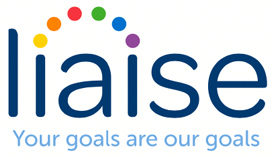Visual aids or supports are non-verbal communication tools that help people with autism express their thoughts, feelings and needs. Understanding traditional forms of communication can often be challenging for people with autism. Visual aids provide a meaningful way for people with autism to express themselves and interact with the world around them.
Autism presents unique communication challenges for those living with it. Many people with autism have difficulties understanding and expressing verbal language, abstract concepts, and social cues. This can have major impacts on their everyday life.
Visual supports like visual schedules, social stories, and communication boards are powerful tools that help people with autism communicate more effectively. By offering a clear and accessible way to understand and process the world around them, visual aids can significantly improve quality of life for people living with autism.
Understanding Autism and Communication Challenges
Some people, whether due to autism or other language difficulties, have trouble understanding traditional forms of speech and communication. Visual aids are non-verbal tools that help people with communication difficulties express themselves and understand the world around them.
Challenges with communication and social interaction are common symptoms of autism. People with autism often experience difficulties in understanding and using traditional forms of language, social cues, and non-verbal communication. These difficulties can lead to frustration, and isolation, whilst limiting their independence.
Visual tools have proven to be highly effective in supporting people with autism in overcoming these communication barriers. One of the primary challenges people with autism face is comprehending the nuances of verbal communication, such as tone of voice, sarcasm, or abstract concepts. Visual aids provide a visual representation of language, making it more accessible and easy to understand.
By using pictures, symbols, or written words, visual tools can enhance comprehension and help people with autism better understand and respond to the world around them.
Types of Visual Aids
- Picture Exchange Communication System (PECS®): PECS® is a widely used visual communication system that involves using pictures to express needs. Individuals are taught to exchange a specific picture card with a communication partner to ask a question or request an item.
- Social Stories: Social stories are visual stories that use pictures to let people with autism know what to expect in specific social situations. These stories use simple language and visual cues to help people with autism understand social cues and expectations.
- Visual Schedules: Visual schedules use a series of images or symbols arranged in sequential order to help individuals with autism understand and follow daily routines.
- Visual Timers: Visual timers use visual representations of time to help people with autism manage their time and understand the duration of activities. By providing a visual countdown, these timers help people better grasp the concept of time.
- Visual Supports for Emotions: Visual supports such as emotion cards or charts can help individuals with autism recognise and express emotions. These tools use pictures or images to represent emotions, which allows people to communicate their feelings.
- Visual Reinforcement Systems: Visual reinforcement systems utilise visual tokens, stickers, or charts to provide positive reinforcement and encourage desired behaviours.
- Communication Boards: Communication boards can range from basic boards with pictures or symbols representing words or phrases to more advanced electronic devices with speech output. These boards allow individuals to express their needs, preferences, and thoughts by pointing to relevant symbols or pictures.
Tips for Using Visual Aids
Here’s a list of tips for incorporating a new visual aid into the life of someone with autism. Remember to always consider the individual’s preferred communication style when choosing a visual aid. As much as possible, try to include the person in the decision-making process.
- Introduce the visual aid gradually: Start by introducing the visual aid in a familiar and comfortable environment. Begin with a few key visuals and gradually increase the complexity as the individual becomes more familiar with using them.
- Provide clear explanations: Take time to explain the purpose and benefits of the visual aid to the person and their support network, emphasising how it can support their communication and understanding. Use simple language and visual demonstrations to help them understand.
- Personalise the visual aid: Customise the visual aid to suit the individual’s specific needs, preferences, and developmental level. Use pictures, symbols, or written words that are meaningful and relevant to their daily life and experiences.
- Use consistent and predictable routines: Incorporate the visual aid into established routines and schedules. Ensure that the aids reflect the actual sequence of activities or steps involved, providing a clear visual representation of what to expect.
- Provide modelling and practice: Demonstrate how to use the visual aid effectively through modelling. Encourage the individual to practise using the visual aid themselves, offering support and guidance as needed.
- Reinforce and praise usage: Offer positive reinforcement and praise when the individual successfully uses the visual aid to communicate or understand. This will encourage their motivation and confidence in using it consistently.
- Involve family members and support networks: Educate and involve family members, caregivers, and teachers in the use of the visual aid. Ensure that everyone is familiar with its purpose and implementation, so they can support its use consistently across different settings.
- Regularly review and update: Assess the effectiveness of the visual aid periodically and make necessary adjustments or additions. As the individual’s communication skills develop, their visual support needs may change, requiring updates to the visual aid.
- Seek professional guidance: Consult with professionals, such as speech-language therapists or behaviour analysts, who specialise in working with people with autism. They can provide additional guidance, strategies, and recommendations specific to the person’s preferred communication style.
- Be patient and flexible: Remember that each individual with autism is unique, and it may take time for them to adapt to and fully utilise the visual aid. Be patient, flexible, and open to modifications or alternative approaches if needed.
Our Specialist Autism Support Services
We are specialists in supporting people with autism through person-centred care and support that is positive, progressive and personal. Through our community-based residential care and supported living homes, people can receive the specialist autism support they need to live with greater joy and independence.
We carefully adapt each of our homes to meet the needs of the people that live there. Safety devices, specialist aids and the latest assistive technologies are all used to create a safe and secure environment.
To learn more about our bespoke autism care and support, contact our friendly team. Every day, every step of the way, we are here to help you and your family thrive.





